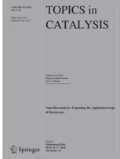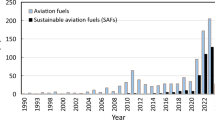Abstract
Internal combustion engines were the technology of choice for propulsion and decentral power supply in the last century. Due to the high energy density of hydrocarbon based fuels that could so far not be reached by alternative technologies they will keep their leading role in most applications for the next decades. Although, its general functionality seems to be unchanged since its invention, the internal combustion engine has gone through substantial developments driven by various challenges. Within these, the pollution control has to be named first due to its role as the main driver for engine and aftertreatment development since the discussions on air quality which started 70 years ago. Meanwhile, all industrialized countries and most of the emerging countries have more or less stringent regulations for the main harmful exhaust components (HC, CO, NOX, Particulates). The second main challenge to be named is the reduction of CO2 emissions. Various engine technologies that are currently used to tackle these global trends lead to major impact on the exhaust aftertreatment components. To tackle these challenges the exhaust aftertreatment development has to be understood as integrated, multi-disciplinary and multi-scale design process considering engine design and operation, on board diagnosis and aftertreatment design and operation likewise.












Similar content being viewed by others
References
Miklautschisch M, Durst B, Henrici S, Unterweger G, Witt A (2015) Partikelquellenanalyse und Ableitung von PN-Reduktionsmaßnahmen am BMW Twin Turbo Motor. In: Berichte zur Energie- und Verfahrenstechnik, Motorische Verbrennung, HDT Ludwigsburg
Befrui B, Berndorfer A, Breuer S, Hoffmann G, Piock W (2015) Effect of fuel pressure on GDi multi-hole injector particulate emissions and tip coking robustness. In: Berichte zur Energie- und Verfahrenstechnik, Motorische Verbrennung, HDT Ludwigsburg
Mastrangelo G, Micelli D, Sacco D (2011) Extreme downsizing by the two-cylinder gasoline engine from Fiat. MTZ
Schopp J, Düngen R, Fach H, Schünemann E (2013) BMW V8 gasoline engine with turbocharging, direct injection and fully variable valve gear. MTZ
Thewes M, Baumgarten H, Nijs M, Hoppe P (2014) Future fuel consumption and emission concepts for boosted Gasoline engines. In: Engine 2020: Spark versus compression ignition in a new environment, Helmut List Halle, Graz
Cairns A, Fraser N, Blaxill H (2008) Pre versus post compressor supply of cooled EGR for full load fuel economy in TC gasoline engine, SAE 2008 01 0425
Grandin B, Angström H, Stalhammer P, Olofsson E (1998) Knock suppression in a TC SI engine by using cooled EGR, SAE 982476
International Energy Agency (2012) Energy technology perspectives 2012: pathways to a clean energy system. International Energy Agency, Paris
Hoppe F, Heuser BT, Kremer M, Pischinger F, Dahmen, Hechinger S, Marquardt M (2015) Maßgeschneiderte Kraftstoffe für zukünftige Motorenkonzepte. In: Berichte zur Energie- und Verfahrenstechnik, Motorische Verbrennung, HDT Ludwigsburg
Körfer T, Schnorbus T, Miccio M, Schaub J (2014) Emissionsbasierte AGR-Strategien für RDE beim Dieselmotor. MTZ, pp 26–33
Körfer T, Schnorbus T, Kalenborn M, Kolbeck A, Bourgoin G, Cecur M, Raimond E (2010) Ganzheitliches dieselmotorisches Konzept zur Erfüllung niedrigster CO2-emissionen. 19. Aachener Kolloquium Fahrzeug- und Motorentechnik, Aachen
Honardar S, Deppenkemper K, Nijs M, Pischinger S (2014) Potentiale von Ladungswechselvariabilitäten beim PKW-Dieselmotor. MTZ, pp 64–69
Bhardwaj OP, Holderbaum B, Rohs H, Körfer T, Grussmann DE, Littmann K, Fricke F (2014) Analysis of fuel economy and emission reduction potential of insulated exhaust systems for modern diesel engines. 12. FAD Konferenz “Herausforderung - Abgasnachbehandlung für Dieselmotoren, Dresden
Körfer T, Bick W, Holderbaum B, Wittka T (2014) Future, upgraded exhaust aftertreatment systems for Automotive Diesel engines for proper compliance with new regulations. International Conference: SIA Powertrain, Rouen
Farrauto RJ, Gulati ST, Heck RM (2012) Catalystic air pollution control: commercial technology. John Wiley & Sons, New York
Otto E, Albrecht F, Liebl J (1998) The development of BMW catalyst concepts for LEV/ULEV and EU III/IV legislations 6 cylinder engine with close coupled main catalyst, SAE Technical Paper 980418
Janssen AJ, Kremer FW, Baron JH, Muether M, Pischinger S, Klankermayer J (2011) Tailor-made fuels from biomass for homogeneous low-temperature diesel combustion. Energy & Fuels 25:4734–4744
Hoppe F, Heuser B, Thewes M, Kremer K, Pischinger S, Dahmen M, Hechinger M, Marquardt W (2016) Tailor-made fuels for future engine concepts. Int J Eng Res. doi:10.1177/1468087415603005
Heuser B, Laible T, Jakob M, Kremer K, Pischinger S (2014) C8-oxygenates for clean diesel combustion, SAE 2014-01-1253
Bhardwaj OP, Lüers B, Kolbeck AF, Koerfer T, Kremer F, Pischinger S, von Berg A, Roth G (2013) Tailor made bio fuels: effect of fuel properties on the soot microstructure and consequences on particle filter regeneration. Proceedings of the ASME International Combustion Engine Division’s 2013 Fall Technical Conference, Dearborn, Michigan, USA
Author information
Authors and Affiliations
Corresponding author
Rights and permissions
About this article
Cite this article
Pischinger, S. Current and Future Challenges for Automotive Catalysis: Engine Technology Trends and Their Impact. Top Catal 59, 834–844 (2016). https://doi.org/10.1007/s11244-016-0557-3
Published:
Issue Date:
DOI: https://doi.org/10.1007/s11244-016-0557-3




